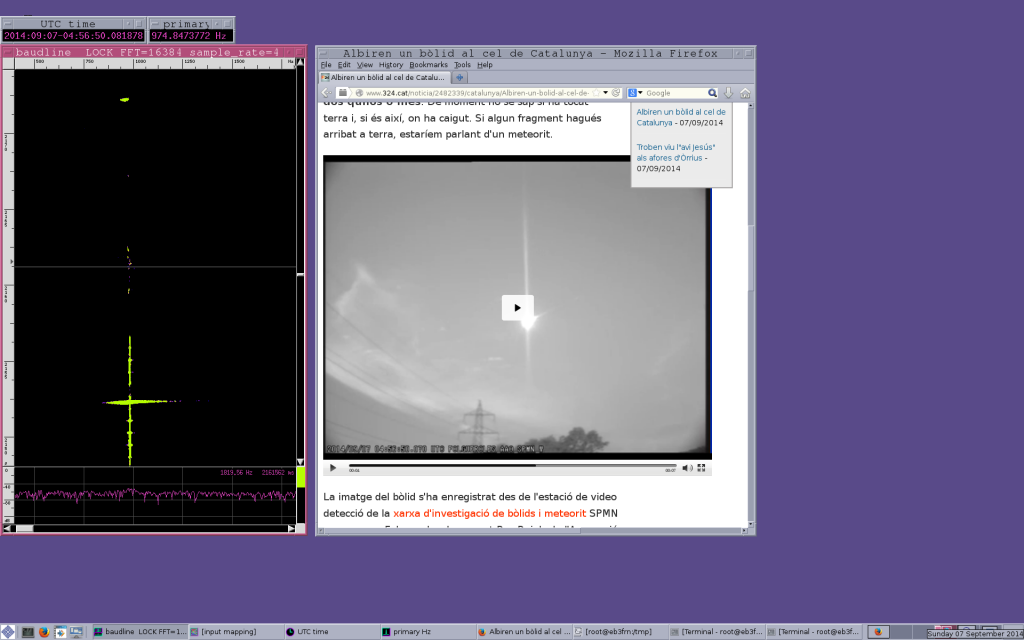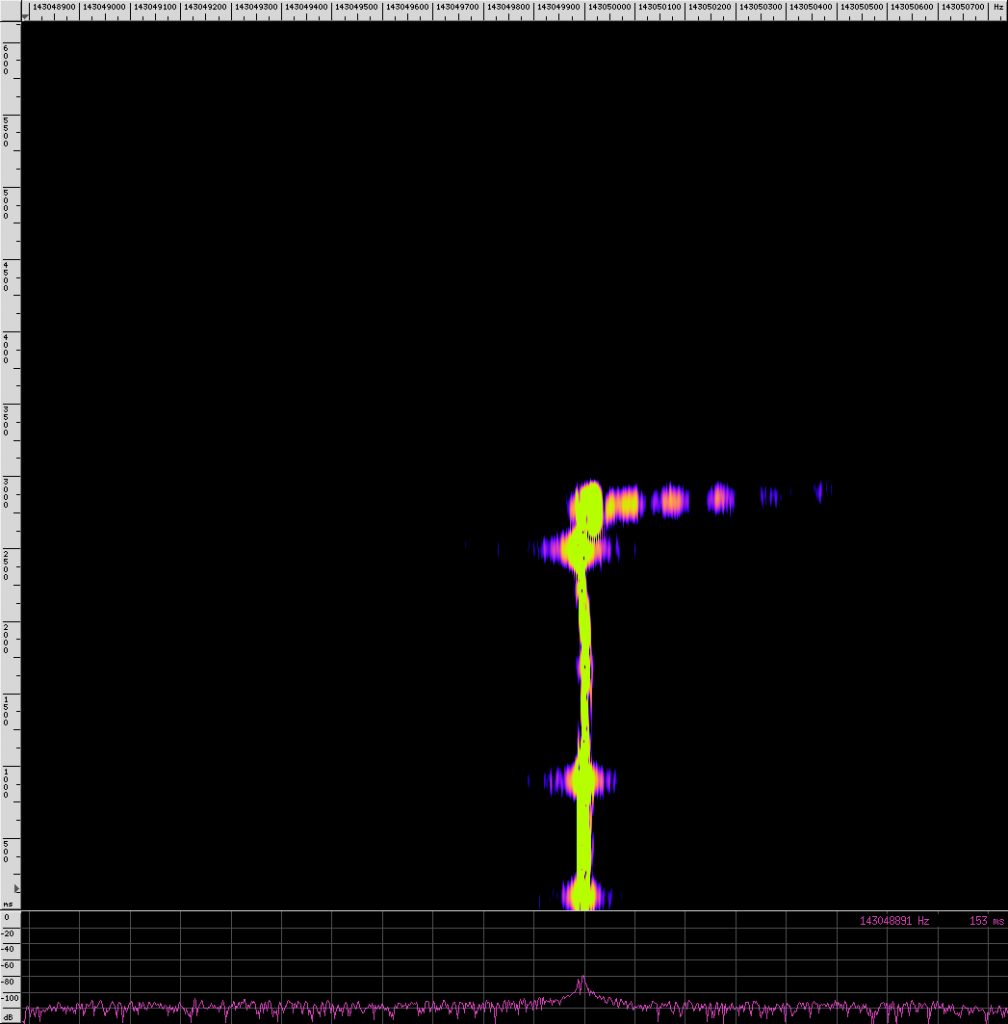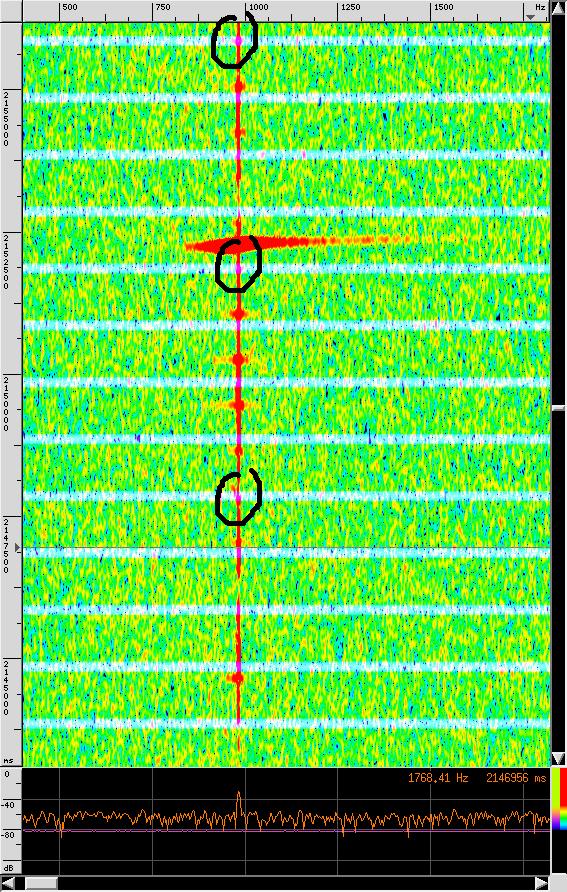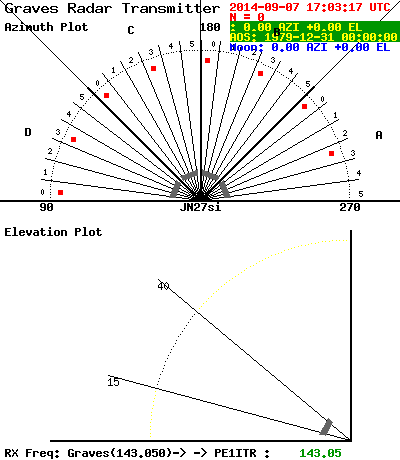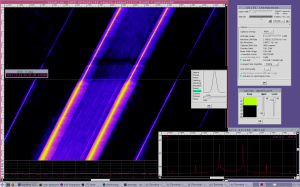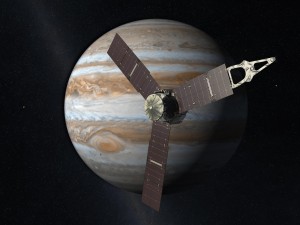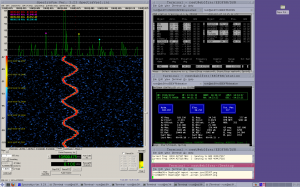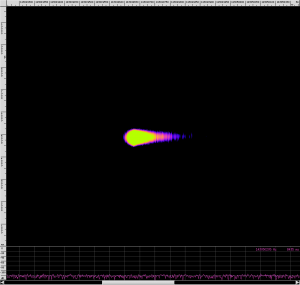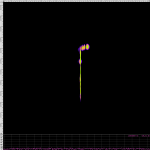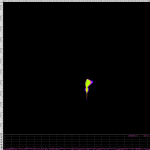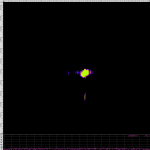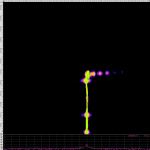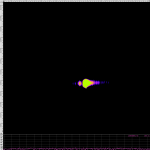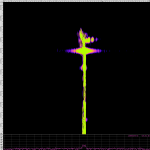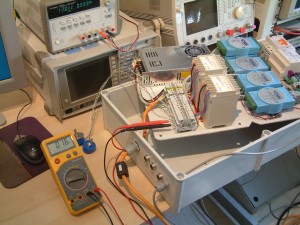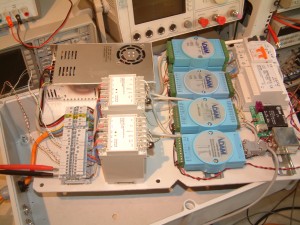Tonight, I was recording the Graves radar frequency (143.050 MHZ) to see I can detect the 2014 RC asteroid without success. But over a nice meteor has crossed Catalonia at the 04:56:50 UTC and has ben detected 🙂
The signal not is specially strong, because the target was very near from me. Using the Graves radar is more easy see meteors that are impacting from more remote locations of France or Italy
Other meteors can be observer before and after the target
